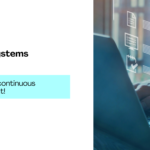

Elexes Team
Elexes medical consulting is one of the leading regulatory & compliance consultant for several industries: Medical device, Pharmaceuticals, Cosmetics, Food, and Biologics.

Can you imagine using life-saving medical devices that have not been certified for quality, safety and efficacy?
These aspects if compromised, can result in enormous adverse effects and are simply non-negotiable!
Let’s take a look at how one can prove their devices to be safe and effective and ensure high quality throughout its life. ISO 13485 (commonly referred to as Quality Management System (QMS)), a standard specifically formulated for medical devices helps one do that.
The ISO 13485 standard emphasizes on various aspects of medical device such as:
The standard considers both customer requirements as well as regulatory requirements and a certification to 13485 helps improving the overall performance, eliminates uncertainty and widens market opportunities
It comprises of a set of requirements and guidelines which are translated into SOPs, WIs and forms that are followed to implement the standard’s requirements in everyday activities at a Medical Device company:

Working with a company like Elexes helps in preparing and organizing SOPs, WIs and Forms that can help systematize all activities for Medical Device companies. These documents are practical and simple to follow, and are prepared in compliance with ISO 13485, MDD or the respective requirements of a specific target market.
◉ Commitment to quality:
Whether it be it a startup, mid level or a big Medical Device company, ISO 13485 certification is an important requirement to comply with when legally entering markets, and a true approach of demonstrating the commitment of med dev company’s top management in providing safe, effective and high quality products to their end users.
◉ Risk vs. benefit:
While therapeutic medical devices like the pacemakers and syringe/infusion pumps or diagnostic medical devices like MRI and endoscopes can save countless lives, they also have profound risk factors that can pose huge threats to human lives if failures occur. These risks can be managed and mitigated by implementing an effective QMS.
◉ Constant check:
The clauses outlined below in the ISO 13485 keep a constant check on Medical Devices based on the user needs and the respective regulatory requirements. Be it design input phase or recalls and/or adverse event phase, the ISO 13485’s clauses have been holistically designed considering all these activities.

This harmonized standard for Medical Devices is applicable across various countries (as illustrated below) to different classes, types and sizes of devices.

The extent of ISO 13485 applicability to a Medical Device Legal Manufacturer (company that legally owns a device) is based on two things:
◉ The type of activities performed at the company
E.g., If the Manufacturer outsources manufacturing, assembly and testing of devices, but only does design, they would need to have in place robust incoming inspection, supplier qualification, approval, control and audits. They would need to ensure that their suppliers are consistently making products that meet their specifications.
◉ The type and class of device manufactured by the company
E.g., If the Manufacturer makes sterile active implantable products, they would need to be very vigilant of biocompatibility, packaging validation, sterilization assurance and accelerated/real time ageing of the products. If they are targeting EU or any other market, in addition to the ISO 1385 requirements, they would need to take into account AIMDD or other applicable requirements for that specific device type.
The applicable scope is reflected in the company’s Quality Manual, Quality Policy, associated SOPs, forms and other records.
“The Only Thing That Is Constant Is Change”― Heraclitus
In an industry as dynamic as the Medical Device industry, the QMS evolves along with the advancing device technology. The ISO 13485 has progressively been revised, and from 2003 to 2016, 3 versions have been introduced:
The ISO 13485 standard ensures that companies provide Medical Devices which persistently meet and supersede end user requirements!
Photo credits: Practice Fusion, The Tico Times, EECatalog, Vista News, The Manufacturer
Elexes medical consulting is one of the leading regulatory & compliance consultant for several industries: Medical device, Pharmaceuticals, Cosmetics, Food, and Biologics.


